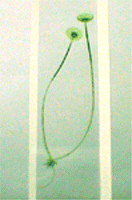
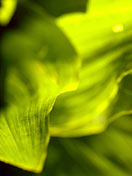 Biophotons
- The light of life
Biophotons
- The light of life
Each active cell sends light. By this light emission one can recognize physically whether a being is well - all the same whether it concerns plants, animals or humans. This method could let disconcerted consumers hope again.
Without light there would be
no life on earth. Plants, animals and humans need the warmth and energy
of the sun. But light does not only shine from the outside onto organisms,
each individual active cell sends light, this is true of all plants, animals
or humans.
This phenomenon is used in the biophoton analysis. It is the science of
light in the living organism. It concerns a new method of analysis, which
can recognize the biological and physiological condition of an organism
by its specific shining . Also the quality of food can be determined thereby.
Shining under the light magnifying
glass
Therefore one needs a low-light enhancer, highly sensitive equipment,
which can seize a candle flame still from 20 kilometers distance. If one
examines thereby a bio tomato in comparison with a tomato from the supermarket,
there is a differently strong self-light (biophoton emission). The tomatoes
stored light and give it slowly off after the harvest. As much light is
still contained in the fruit and how quickly it is sent off, these things
reveal internal order and vitality of the food.
A question of the order
Professor Fritz Albert Popp of the International Institute of Biophysics in Neuss, Germany, describes: "Each food has its order. The order is a measure for how well an organism works, how it is weighed out. An apple with high quality also improves the order in our organism with the consumption. Food of low quality leads to chaos in the long term. The better the light storage capability, the higer is the quality, the higher is the order."
The strength of the tomato
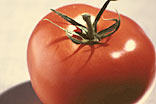 This
light storage capability or "delayed luminescence" is measured
under defined conditions. Thus for example a tomato is illuminated one
minute with 150 a Watt tungsten lamp. Subsequently, researchers observe
with the help of the low-light enhancer, how much light the cells of the
tomato have stored and how quickly this storage is again empty.
This
light storage capability or "delayed luminescence" is measured
under defined conditions. Thus for example a tomato is illuminated one
minute with 150 a Watt tungsten lamp. Subsequently, researchers observe
with the help of the low-light enhancer, how much light the cells of the
tomato have stored and how quickly this storage is again empty.
Food control of BSE and genetic engineering
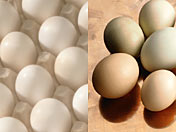 The
measured parameters allow exact conclusions on the quality of the fruit:
One sees, how fresh food is, whether the food was illuminated, was genetically
changed or is loaded with pollutants. For instance an investigation of
eggs of putting batteries and open land keeping showed that eggs from
open land keeping have a clearly higher light storage capability. Thus
they have also the better quality.
The
measured parameters allow exact conclusions on the quality of the fruit:
One sees, how fresh food is, whether the food was illuminated, was genetically
changed or is loaded with pollutants. For instance an investigation of
eggs of putting batteries and open land keeping showed that eggs from
open land keeping have a clearly higher light storage capability. Thus
they have also the better quality.
By the way this analysis also works with meat and fish and could give information of examinations in things BSE and hormone treatment of animals in the future.
Do the seeds still germinate?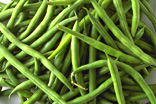
The biophoton analysis is also the only method, with which it can be predicted whether seeds will still germinate or not. If one only examines the content materials of the seeds, this states nothing over their vitality. If one discovers however shining, that is the proof for the fact that the cells are still active, thus are alive and the seeds will float.
Symmetrical shining of humans
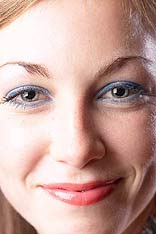 Also
in humans the shining of cells can be measured. Healthy humans radiate
light symmetrically. But in cancer patients and multiple scleroses patients
this symmetry is disturbed and the values of emitted light are much higher
than in healthy people.
Also
in humans the shining of cells can be measured. Healthy humans radiate
light symmetrically. But in cancer patients and multiple scleroses patients
this symmetry is disturbed and the values of emitted light are much higher
than in healthy people.
In the medical diagnosis
the biophoton analysis gives information over both the total state of
human health (symmetry of the emission), and over particular local diseases
(change of the emission).
A goal of the medical application of biophotonics is the forecast of diseases by the diagnosis of malfunctioning cells. Classical diseases in the sense of distinct symptoms can be recognized before they emerge and can be avoided by prompt correction of the cell function.